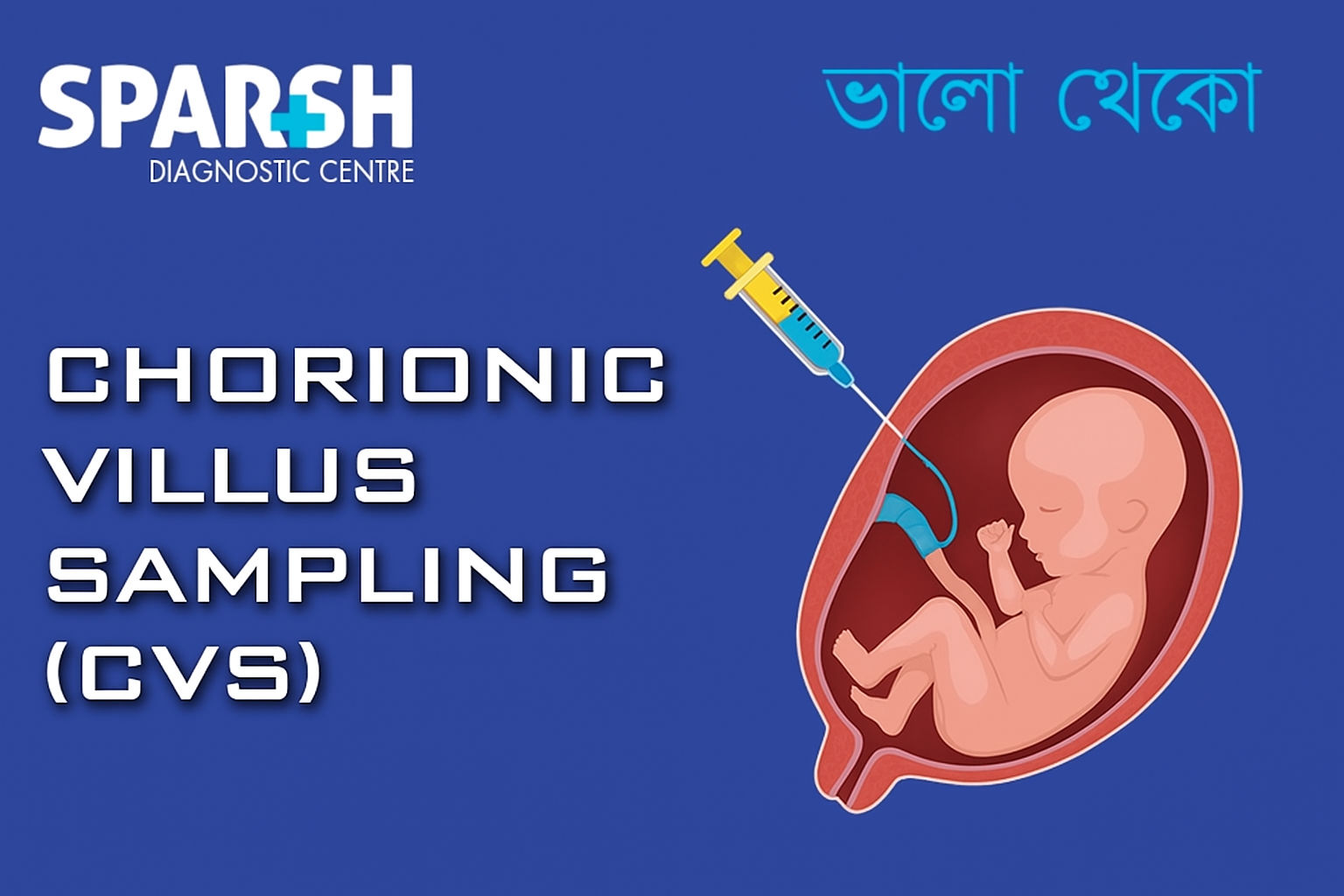Pregnancy is often described as a journey filled with joy, anticipation, and a fair share of anxieties. Expectant parents want to ensure their baby is healthy and thriving, which is why prenatal screening tests play such an important role. One such test is Chorionic Villus Sampling (CVS) – a procedure that helps detect genetic or chromosomal abnormalities early in pregnancy.
What is Chorionic Villus Sampling (CVS)?
Chorionic Villus Sampling (CVS) is a prenatal diagnostic test performed during the first trimester of pregnancy, typically between the 10th and 13th week. The test involves collecting a small sample of chorionic villi – tiny finger-like projections from the placenta that share the baby’s genetic makeup.
Because chorionic villi cells contain the same DNA as the fetus, analyzing them allows doctors to detect chromosomal abnormalities and certain genetic conditions.
Why is CVS Done?
CVS is not a routine test but is recommended in specific situations where there is a higher risk of genetic disorders. Your doctor may suggest CVS if:
Abnormal results from ultrasound in pregnancy or first-trimester screening are found.
You are 35 years or older at the time of delivery.
You or your partner have a family history of genetic disorders.
You or your partner are carriers of inherited conditions such as cystic fibrosis, sickle cell anemia, or thalassemia.
A previous pregnancy was affected by a genetic disorder.
Conditions CVS Can Detect
CVS is primarily used to diagnose:
Chromosomal abnormalities (Down syndrome, Edwards syndrome, Patau syndrome)
Genetic disorders (cystic fibrosis, sickle cell disease, Tay-Sachs, muscular dystrophy, thalassemia)
Sex-linked disorders (X- or Y-linked conditions)
For conditions like spina bifida, your doctor may recommend follow-up testing such as amniocentesis or detailed ultrasound.
When is CVS Performed?
CVS is usually performed between 10–13 weeks of pregnancy. Doing the test earlier may increase risks, while after 13 weeks, amniocentesis is often preferred.
Types of CVS Procedures
Transcervical CVS – catheter passed through the cervix.
Transabdominal CVS – thin needle passed through the abdominal wall under ultrasound guidance.
Preparation and Procedure
Before CVS, your doctor may suggest:
Reviewing all prenatal tests.
Having a full or empty bladder depending on method.
Bringing support for comfort.
What to Expect After CVS
Mild cramping or spotting.
Rest for 24–48 hours.
Results within 1–2 weeks.
CVS vs. Amniocentesis
| Feature | CVS | Amniocentesis |
|---|---|---|
| Timing | 10–13 weeks | 15–20 weeks |
| Sample | Placental tissue | Amniotic fluid |
| Detects Neural Tube Defects | ❌ | ✅ |
| Accuracy | ~99% | ~99% |
Recovery and Emotional Support
Watch for bleeding, fever, or fluid leakage.
Rely on family and medical guidance.
Genetic counseling may be offered.
Alternatives to CVS
If you are unsure about CVS, your doctor may suggest:
Chorionic Villus Sampling (CVS) provides valuable genetic information early in pregnancy. While there are small risks, CVS can help families prepare for their baby’s future with clarity and confidence. Discuss with your doctor whether CVS, prenatal ultrasound, or other screening tests are the best choice for your situation.
Frequently Asked Questions (FAQ)
1. Is CVS painful?
It may feel uncomfortable, similar to menstrual cramps, but not usually painful.
2. How long do CVS results take?
Usually 1–2 weeks.
3. Does CVS detect all birth defects?
No, it does not detect neural tube defects like spina bifida.
4. What is the miscarriage risk?
About 0.2%–0.3%, slightly higher than amniocentesis.
5. Is bed rest required?
Not strict, but rest for a day or two is recommended.
#BhaloTheko
Disclaimer:
No content on this site, regardless of date, should ever be used as a substitute for direct medical advice from your doctor or other qualified clinician.

![]()






[…] Chorionic villus sampling (CVS) or amniocentesis can detect hemophilia in a fetus. […]
[…] syndrome, allowing parents to make informed decisions about further diagnostic testing, such as chorionic villus sampling (CVS) or […]
[…] Testing: For couples at risk of having a child with thalassemia, prenatal testing options such as chorionic villus sampling (CVS) or amniocentesis can be used to detect the condition in the developing […]